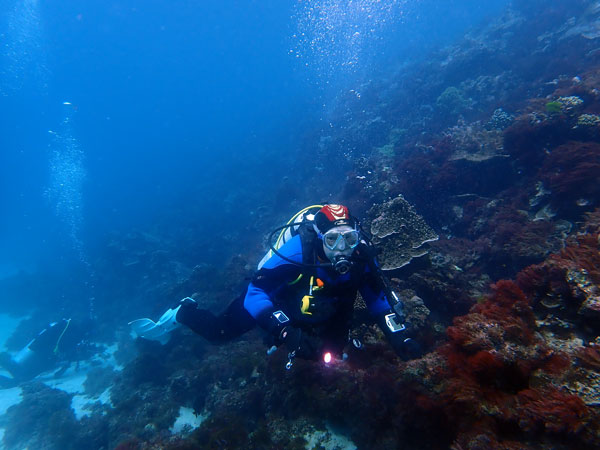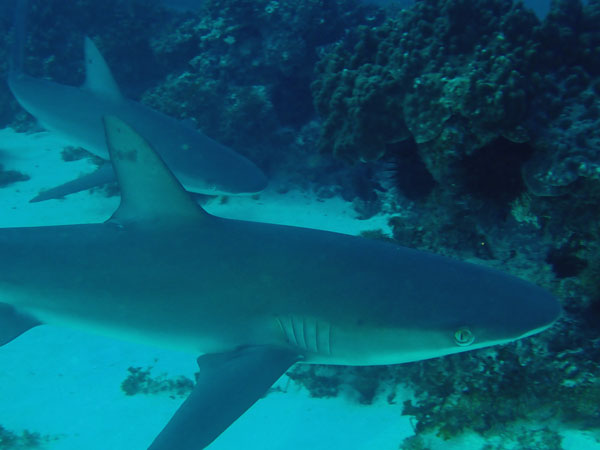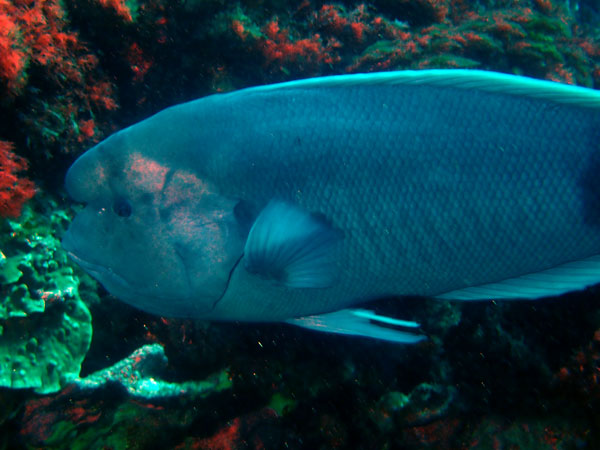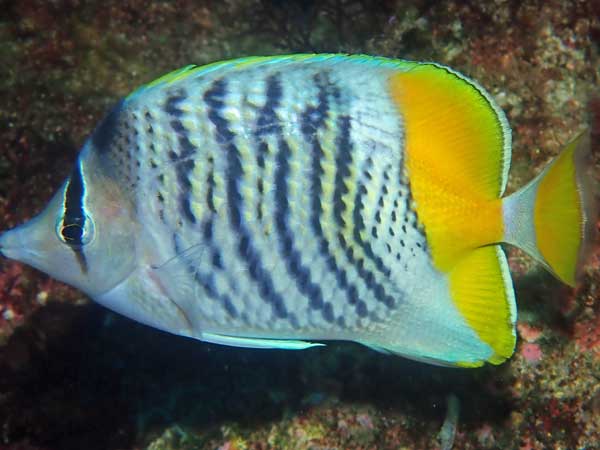|
Michael McFadyen's Scuba Diving – Lord Howe Island – Erscotts Blind
The south-western side of LHI contains the lagoon and the barrier reef which runs from the northern end of the island to the southern end. The lagoon has a few entrances, at least two at the southern end and one at the northern end. The western side of the island is suitable to be dived in easterly, northerly and north-easterly winds when here will be fairly protected.
This dive site is located just inside the first of the southern entrances which is the second one from the south. It is called Erscotts Passage. This passage is a more minor one than the main one here, Man of Way Passage. This is because it is not marked with channel markers or other devices.
Erscotts Blind is located between two sections of the barrier reef and is to the north of Erscotts Passage. I assume it is called “Blind” as this is not a real entrance or passage and comes to a dead (or blind) end. Its actual location is GPS 31°32'58.769"S 159°03'46.573"E using WGS84 as the datum. The site is about one kilometre from the shore off Capella Lodge and about 400 metres from the middle of Erscotts Passage.
 |  |
| John McPherson on the reef | A large spotted porcupinefish or pufferfish |
This site consists of a bowl within the surrounding coral reef. It is about 125 metres north-west to south-east and 75 metres in the opposite direction. The centre of the site is about 18 to 20 metres deep, with the edges about 7 metres deep on the western side and deeper 15 metres on the eastern side.
I started the dive by heading to the western side of the bowl and heading north so that I went around in a clockwise direction. On the edge of the bowl, the coral went from the sand up to about 3 metres or so. The coral was not all that colourful, but there were lots of it and it was fairly healthy. There were lots of tropical species, especially butterflyfish.
 |  |
| One of the Galapagos sharks | Another Galapagos shark |
I find a huge orange and white Spanish dancer, biggest I have ever seen I think. About 60 metres along we come to a series of small boulders off the main reef. There are six small Galapagos sharks here, constantly circling around, coming very close to us. I get some very good photographs as well as video footage. We stay here for five minutes or more.
Soon after this the reef turns to the east and then back to the south-east. It gets deeper from here, dropping down to 14 and then 16 metres. After about 100 metres you will see the entrance into the hole so you can cut back across to the other side near where you started. You will probably see the boat's anchor and boat as you go.
Once here, you can spend some more time looking at the reef and then spend your safety stop on the slope before swimming back to the boat.
 |  |
| Halgerda species nudibranch | Humpheaded wrasse |
 |  |
| A damselfish, not sure of the species | Mertens butterflyfish |
Quite an interesting dive, with the very friendly Galapagos sharks the highlight.
On my dive in May, I had 21.7°C water and about 10 metres visibility (reduced due to the very fine sand here). A pretty interesting dive site.
| 
 v6.00.307 © 2003-2005
v6.00.307 © 2003-2005